HS-LS4-1
Communicate scientific information that common ancestry and biological evolution are supported by multiple lines of empirical evidence.
-
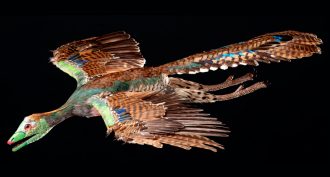 Fossils
FossilsThis dino-bird is super-feathered
This late-Jurassic dino was also a bird. Its ample coat of feathers emerged before any need for flight.
-
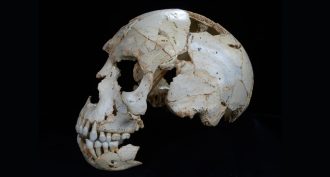 Archaeology
ArchaeologyNeandertal ancestor?
Fossils found in a Spanish cave have features that are a combination of Neandertals and other species. The mix suggests Neandertal roots go back even farther than scientists had suspected.
-
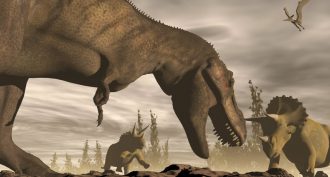 Fossils
FossilsHot-blooded dinos? Try lukewarm
New study finds these reptiles may have had an internal furnace that sort of resembled some sharks. It appeared to run neither hot nor cold.
-
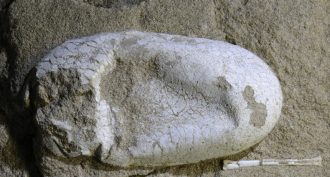 Fossils
FossilsThese prehistoric fliers likely nested together
Fossils in nest of newfound pterosaur species suggest these animals were part of a social network — and may even have lived communally.
-
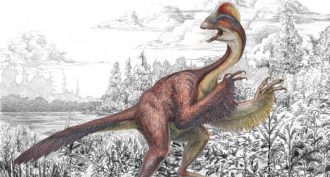 Fossils
FossilsScary ‘chicken’ roamed Earth with T. rex
Scientists have just pieced together evidence of a weird new dinosaur that sported sharp claws, feathers and a beak. And it just may have been one of the last dinos to roam Earth about 67 million years ago.
-
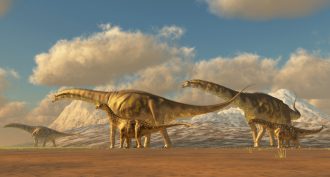 Fossils
FossilsReviving dinosaurs
With the help of computers, researchers are getting a pretty good idea of how these ancient creatures moved, walked and ate.
By Sid Perkins -
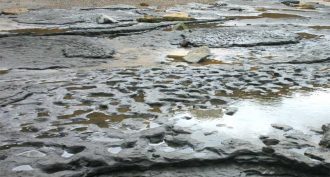 Archaeology
ArchaeologyAncient footprints surface in Britain
There are hints they could have been made by ancestors of Neandertals.
By Bruce Bower -
 Animals
AnimalsThe secret songs of giant beavers
Scientists discover a noisemaking chamber in the extinct animal’s skull.
-
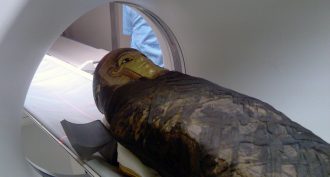 Humans
HumansMummies share their secrets
Cutting-edge technology such as CT, or CAT, scans and endoscopes are allowing scientists to see not just what’s underneath the wrappings but also what’s inside a mummy’s body.
-
 Humans
HumansOld bones ignite fresh debate
Scientists try to understand how 2 million-year-old fossils fit among ancient species.
-
 Animals
AnimalsWhen the giant ants went marching
A new study of an ancient fossil suggests that 50 million years ago, supersized ants went on a cross-continental trek.
-
 Animals
AnimalsEating can be skin deep
In the laboratory, bottom-dwelling hagfish absorb nutrients through the skin.